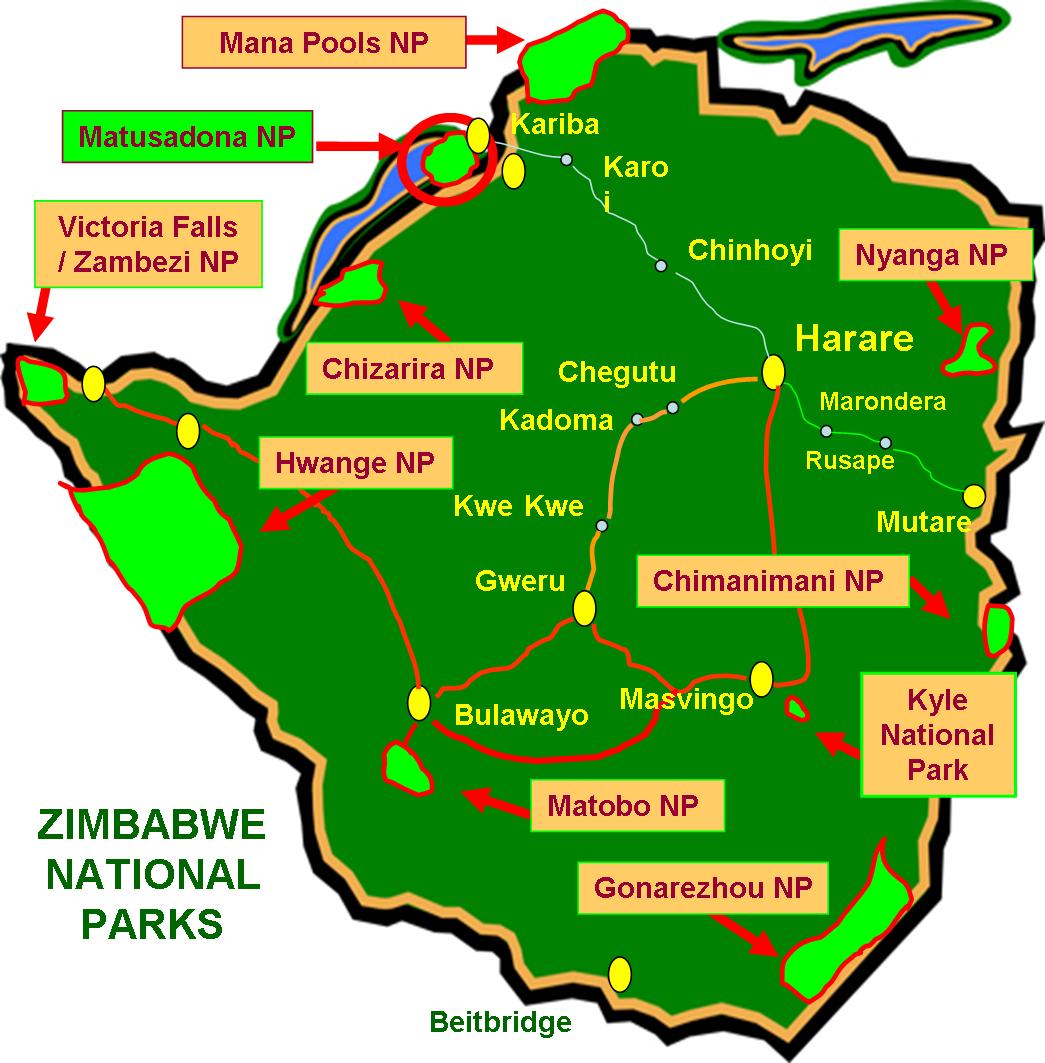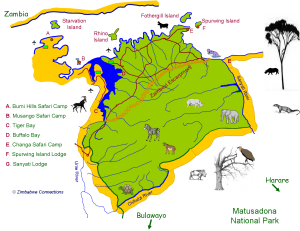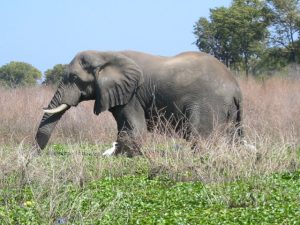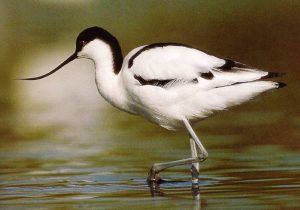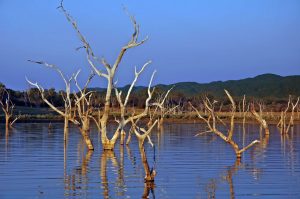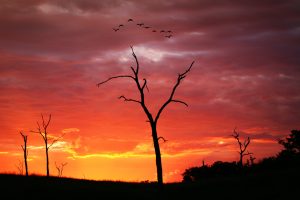Matusadona National Park
Situated in Northern Zimbabwe
The Matusadona is a very unique National Park and one of Zimbabwe’s unspoilt wildlife and wilderness gems. Remote and rugged, Matusadona is characterised by the vast open spaces, spectacular sunsets, extensive wildlife and the numerous ‘skeletal’ trees which remain as a result of the flooding of the Zambezi valley in the early 1960s. This occurred upon completion of the construction of the Kariba dam wall and the resulting rising waters which formed the lake. Kariba dam was built between 1955 and 1959. Over the years many of the submerged trunks of the trees have become ‘fossilised’ and have thus survived for well over fifty years. The trees form important habitats for aquatic birds and breeding grounds for the fresh water fish.
CLICK ON IMAGE BELOW
The flooding of the Zambezi Valley to form Lake Kariba gave rise to Operation Noah which was and still is, by far the most extensive wildlife rescue programmes ever undertaken in the world. The flooding of the Zambezi Valley to form the lake created many islands, some only remaining for a short time as the lake rose. As a result many animals became trapped and required rescuing.
The rescue project was named ‘Operation Noah’ and was lead by Rupert Fothergill with the head veterinarian being Dr John Condy who pioneered many of the veterinary procedures used. No rescue programme on this scale had ever been undertaken anywhere in the world and certainly not involving such large numbers and variety of wildlife species. Many of the animals were released into the Matusadona area which had been proclaimed a non-hunting area on 7th November 1958. It became a Game Reserve in 1963 and in 1975 was designated a National Park under the Parks & Wildlife Act. The park is also an ‘Intensive Protection Zone’ for the endangered Black Rhino.
Matusadona NP can be divided into two distinct regions, the flatlands bordering the lake which occupy approximately one third of the Park and the rest which is made up of the Zambezi escarpment known as the Matusadona Mountains which rise some 700 metres above the valley floor. The park comprises some 1 400 square kilometres of diverse flora and fauna and is bounded by the Ume River to the west, the Sanyati River to the east, Lake Kariba to the north, and the Omay communal land and Matusdona Mountain range to the South. The name Matusadona derives from the local word ”Matuzviadonha” which literally means ‘constant dripping of dung’, a reference to the vast animal populations.
The Matusadona NP is truly a wonderful place to visit and relax or you can partake in a variety of activities such as guided walks, game drives, lake cruises as well as boat and canoe trips to explore the many creeks and inlets. On the shoreline there are some excellent safari lodges as well as ZIMPARKs lodges and camp sites.
Matusadona National Park is only accessible by air charter, 4 x 4 vehicle or boat. The Park lies about 20km across the lake from the town of Kariba where we can arrange a pick up.
